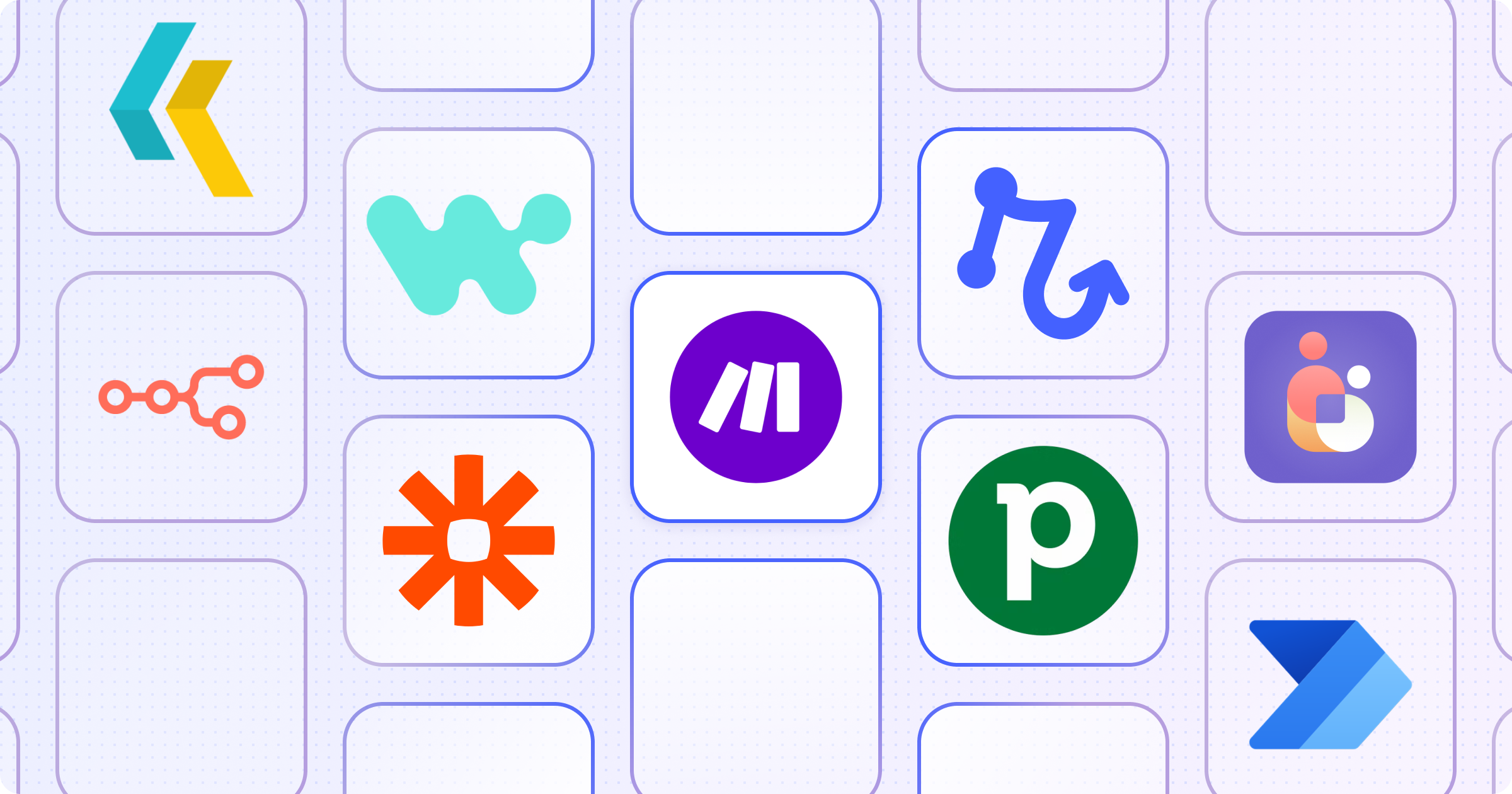
Make (formerly known as Integromat) is a longtime leader in the automation space that you probably know as the primary alternative to Zapier. It's a more complex, technical product that is optimized for automation experts and consultants. If you've been using it or considering it, you may be feeling the following:
- It's too complex to figure out and the learning curve is very steep.
- Errors, performance issues, and failures are a constant source of frustration.
- The AI capabilities are lagging behind other tools and are too hard to use.
If you're facing these challenges, or just looking for the landscape of alternatives, you've come to the right place.
TLDR
First, if you only have 30 seconds, here's what you need to know:
- If you're looking for the best all-around experience at a great price, start with Relay.app.
- If you're looking for an established tool with the most integrations, go with Zapier.
- If you're an enterprise IT team, Workato or Tray.ai are your best options.
- If you're an engineer, choose Pipedream, ActivePieces, or n8n.
Now, if you have a bit more time, read on to see what you should consider in an automation tool and get the full list of options.
What should you look for in a Make alternative?
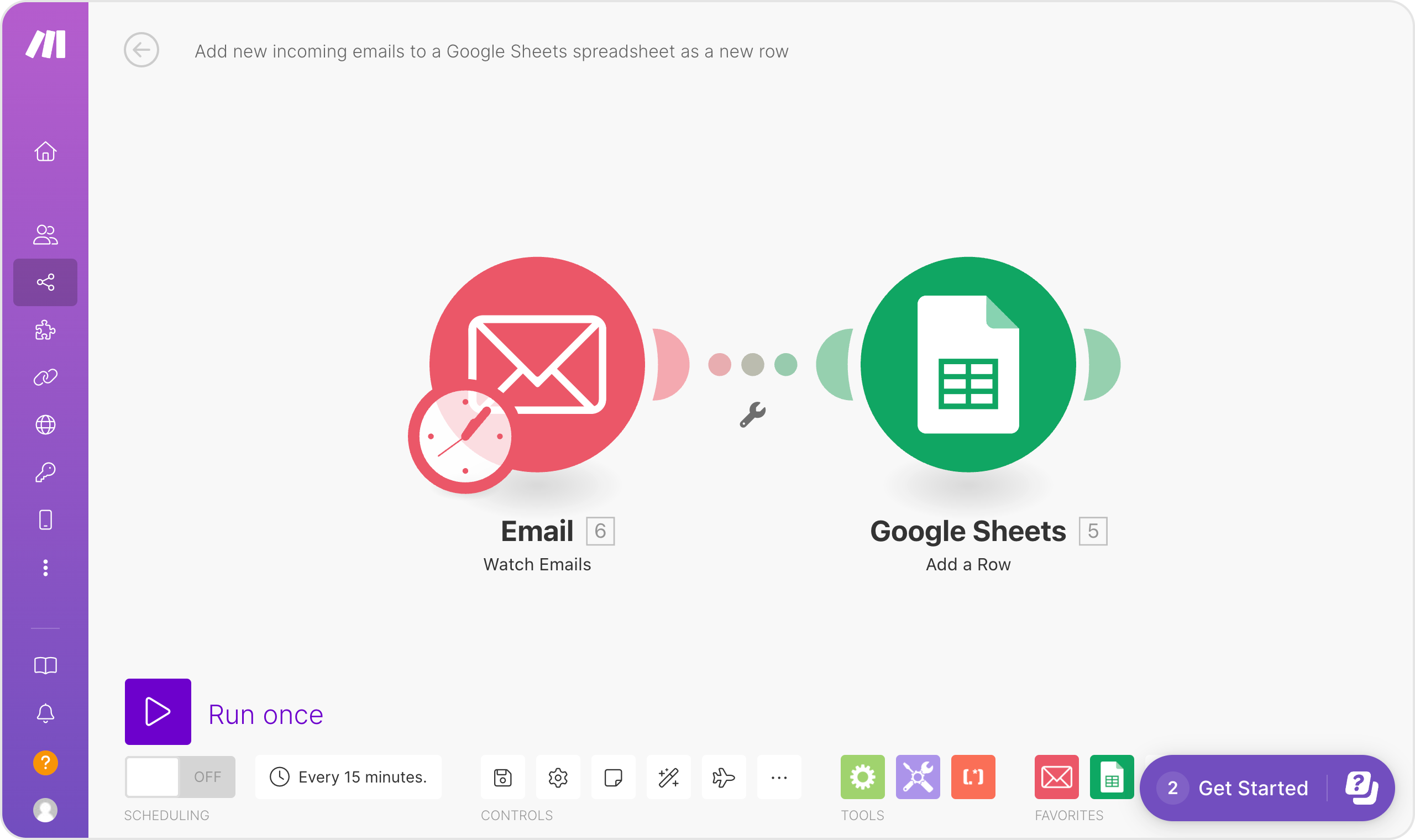
If you’re seeking a Make alternative, you may already have a specific frustration in mind. Perhaps you need an easier-to-use experience, more reliable service, or a more affordable solution. But if you're new to the market, here’s what we think you should consider to make an informed decision—and what we used as criteria for the tools we reviewed:
🖼 Intuitive Interface
The whole point of automation platforms is to enable users that don't know how to code to set up automated workflows. So the most important criteria for workflow automation tools is how intuitive they are to use for less technical audiences. Can a novice quickly learn the platform’s features and set up what they need? Does it have a modern drag-and-drop interface? Is it clear how to test complex workflows and fix errors? Do you need to know what an API is or can you work with simpler constructs? Make has a reputation for being very hard for beginners and if that's why you're looking for an alternative, you should make this your most important criteria.
🤖 AI Experience
We are all going to be using AI automations much more in the future than we are now, so you should find a platform that makes it easy to integrate different AI tools into your workflows. Can you experiment easily with AI without setting up special accounts with different AI tools? Can you add a human-in-the-loop to double-check the outputs of an AI step? Can you work with all of the leading AI models? Even if you don’t need these AI features yet, these questions can help you evaluate the level of innovation of each automation platform.
🖇 Integrations
The whole point of an automation tool is to connect your apps, so it needs to have pre-built connectors with all of the apps you use! Most automation platforms will have integrations with common tools like Gmail, Google Drive, Slack, Notion, Salesforce, etc. But before choosing a tool, double-check that it supports all of the advanced automation capabilities and pre-built integrations that you need, and within each of those connections, it covers all of the specific triggers and actions required for your workflows.
💰 Price and Value
Most workflow automation tools use a combination of pre-set monthly plans and usage-based pricing, which can quickly add up and bust your budget. But don't just look at the price tag; consider the value (i.e. how much the platform charges for each step or operation). Pricing tiers and custom pricing details should match the broad range of integrations and features you need without additional costs. Do you need multi-step workflows? Advanced conditional logic steps? Make sure the platform you choose provides competitive pricing plans that meet the wide range of your needs.
The 10 Best Make Alternatives in 2024
1. Relay.app
🏆 Best for: User-friendly interface, built-in AI steps, human-in-the-loop workflows, affordable plans.
🔬 Free Tier: 200 free automations per month
That's us! While we're a newcomer to the space, many of our users have switched over to us from Make. And those that do all say the same thing: it was soooo much faster and easier to set up their workflows in Relay.app. They love that our interface is more modern and intuitive, and they also appreciate how much easier it is to bring AI into their workflows. All of the major models (Open AI's GPTs, Claude, Gemini, Llama, etc) are built directly into the product in an easy-to-use set of AI steps. No need to set up other accounts or fiddle with API keys.
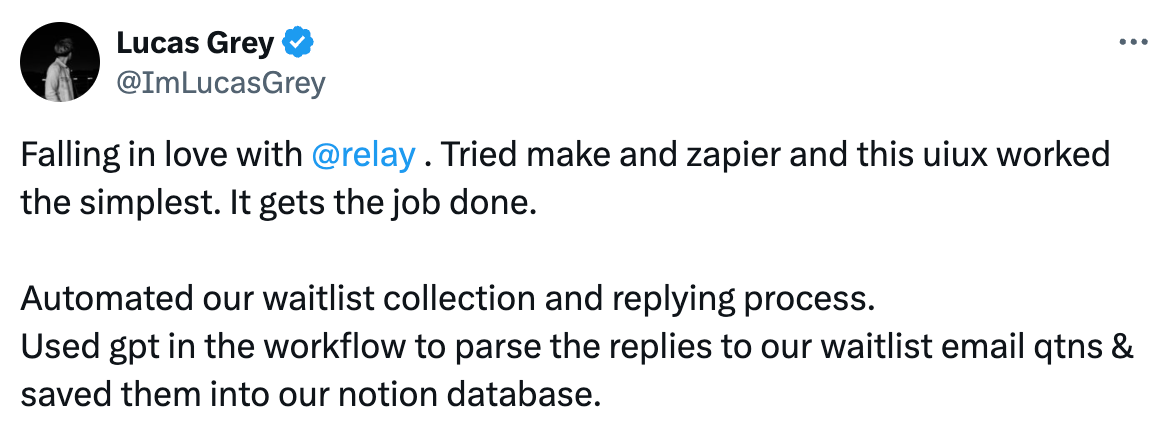
The most unique element of Relay.app is the human-in-the-loop workflows, which are particularly important if you're using AI steps. You can approve automations before they happen, edit the content AI has written, or input additional data.
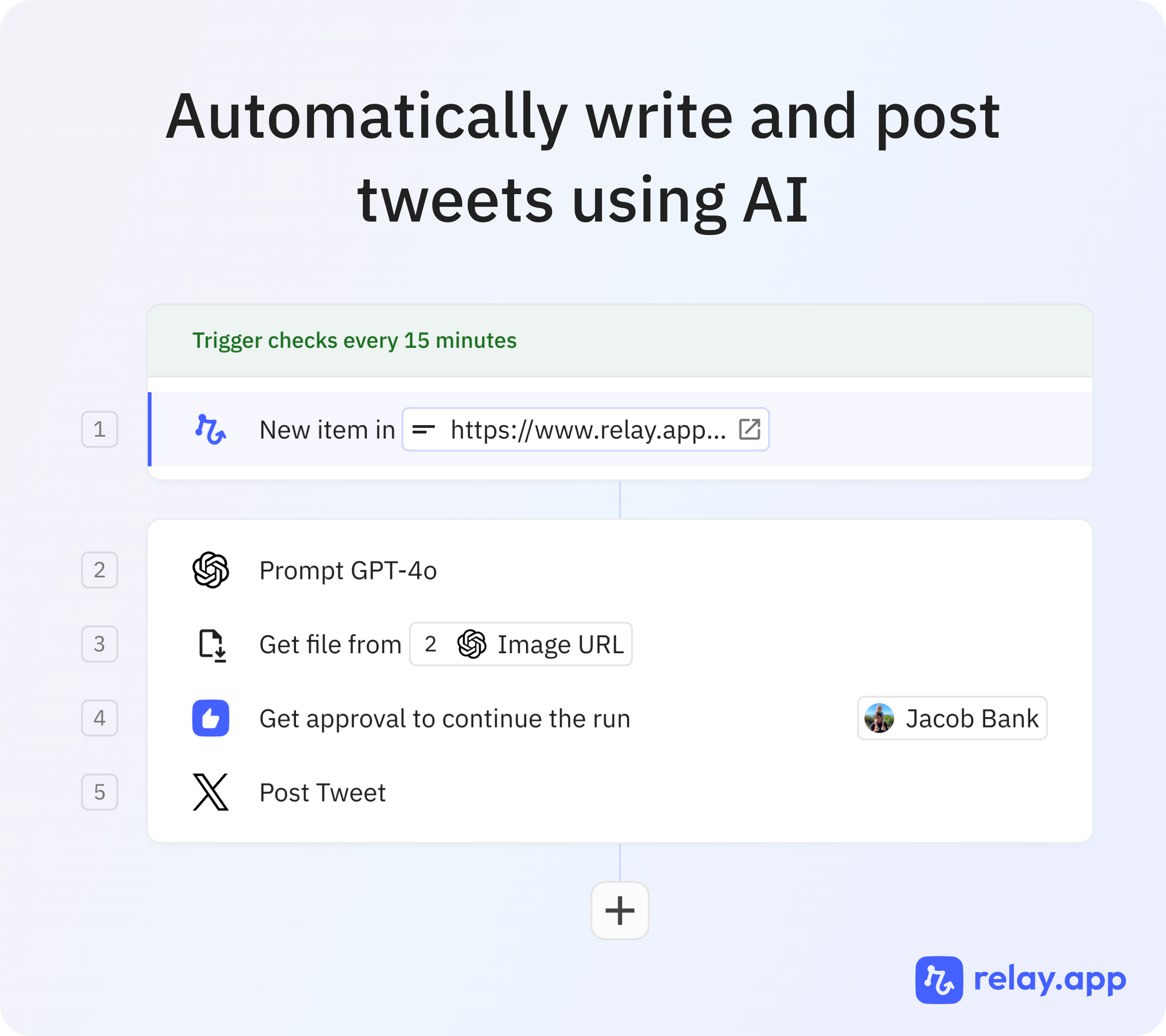
Pros
✅ Modern, delightful user interface that just works.
✅ Human-in-the-loop workflows for approvals, decisions and data input. You can double-check documents, add personalized content to Slack messages, or review an email before it's sent.
✅ Built-in AI that's easy to use. Add AI to your workflows with a set of built-in capabilities for summarization, extraction, translation and more. Also easily switch between models with no extra accounts needed.
✅ Simple and predictable pricing. Relay offers transparent pricing with all fundamental features included across its tiers, and significantly more affordable plans than Make's.
Cons
❌ Integrations. As a newer player, Relay.app may not yet integrate with all of your apps.
Pricing
If you want to take Relay.app for a test drive, you get 200 automations and 500 AI credits per month for free, with unlimited access to all its features.
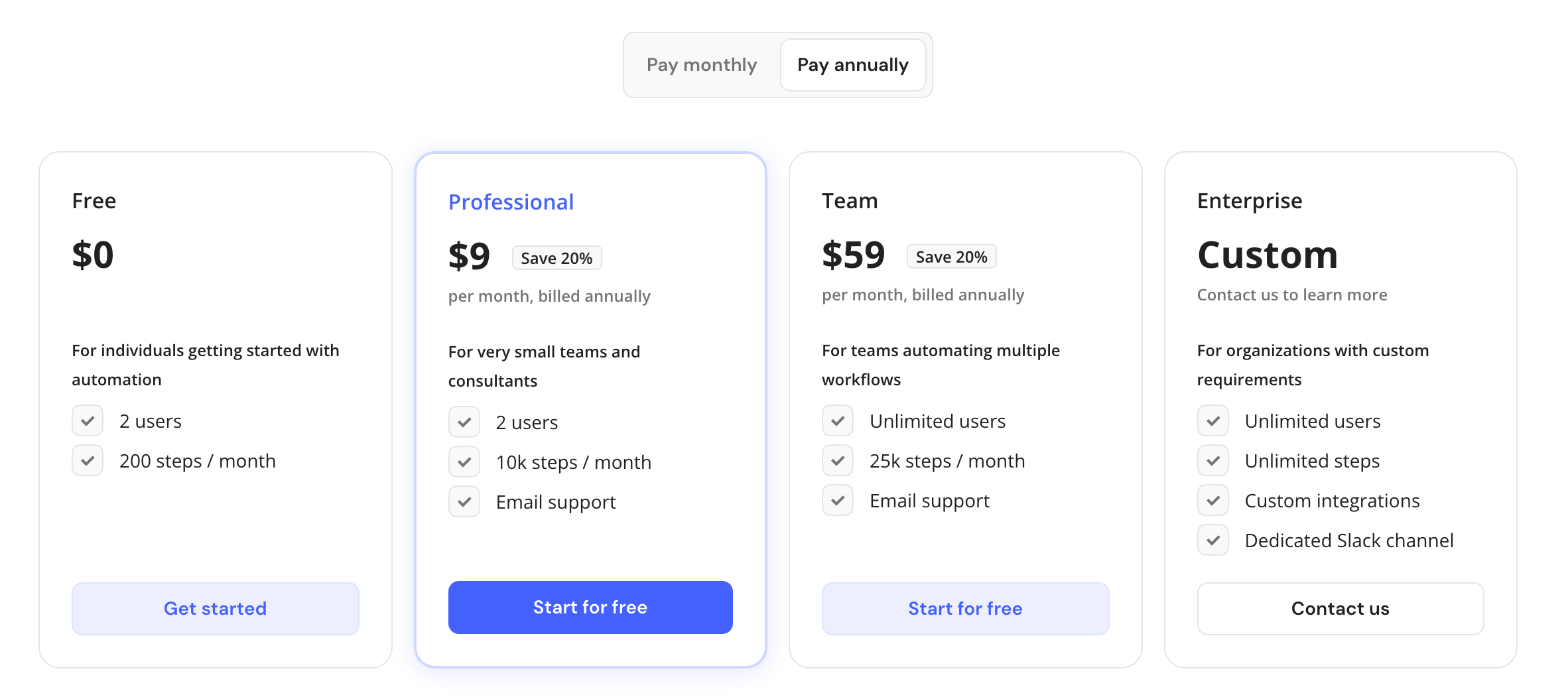
In contrast to Make, Relay.app’s plans all include all features and integrations, and Relay.app's plans offer significantly more automations at a lower price.
Takeaway
If Relay.app supports the integrations you need, it should be your first choice for automating your routine tasks. It has the best user experience (check out the user love in the G2 reviews), the easiest-to-use AI experience, and it's the only platform with human-in-the-loop steps. Plus, the pricing is way better than the alternatives.
Start automating for free with Relay.app.
2. Zapier
🏆 Best for: Comprehensiveness of integrations.
🔬 Free tier: 100 tasks / month, only two-step Zaps.
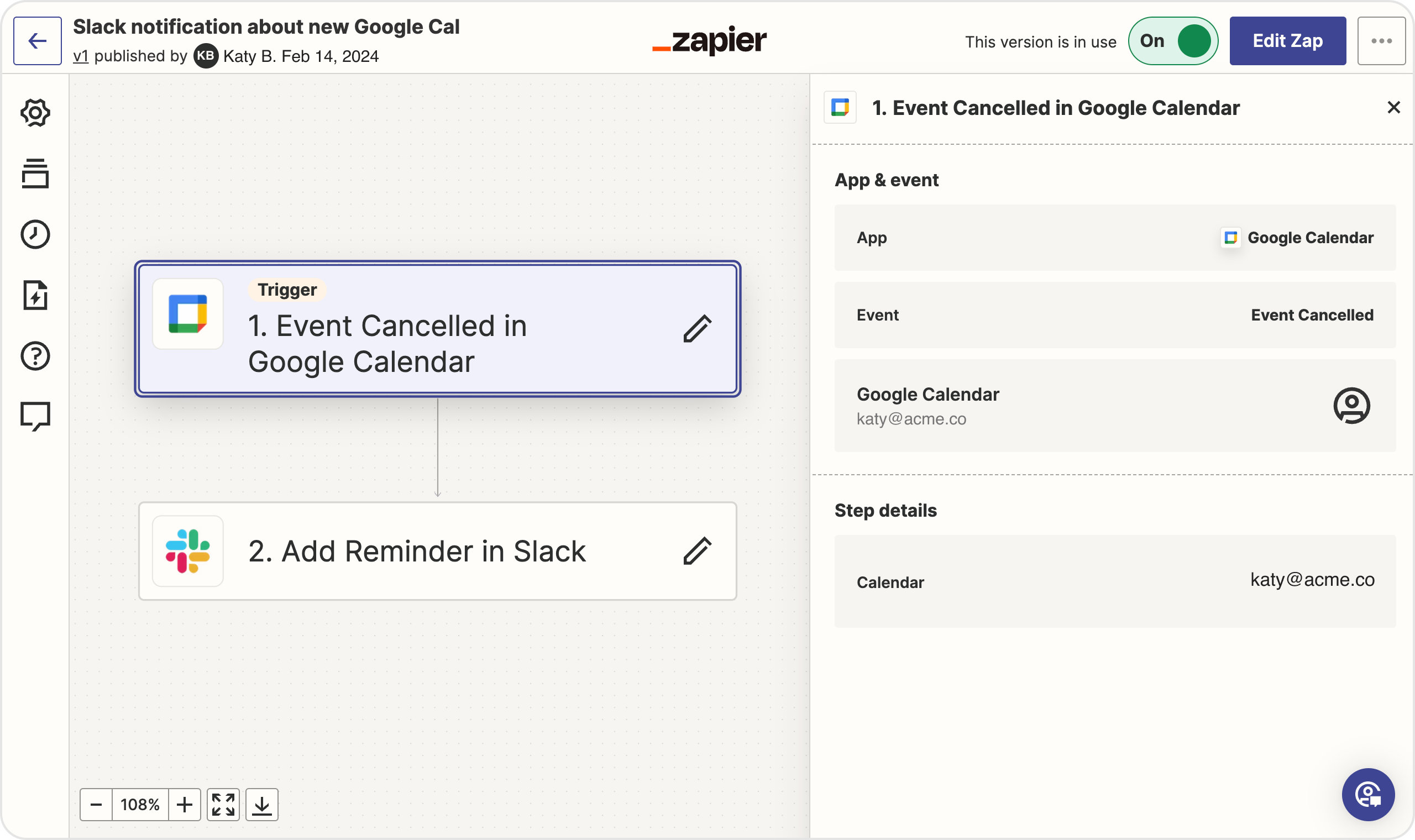
Zapier is the household name in workflow automation and it's usually the first tool people think of in the category.
It has a straightforward no-code platform with some neat recent AI features (including the ability to write automations in plain language) and the largest app library of any of the tools on this list (around 7,000 and counting). It also has a vast library of content and templates. While not as easy to use as more modern tools, it's a solid choice for most users.
Pros
✅ An extensive app integration library of 7,000+ apps, offering the widest range on the market.
✅ Easy workflows with pre-built templates that help you get started faster.
✅ A suite of additional products, including Interfaces, Tables, and Zapier Central.
Cons
❌ Gets very expensive, very fast. Zapier's pricing model, which scales with the number of tasks and premium app integrations, can lead to unexpected cost increases that tend to sneak up fast.
❌ Can be surprisingly unreliable and hard to use. Just because it’s the biggest name, doesn’t mean it’s the best. Zapier automations tend to break, often, and troubleshooting is a pain.
❌ Poor support. Zapier used to be known for its excellent support, but just look around at any review site and you’ll see a range of complaints about the levels of support available.
Pricing
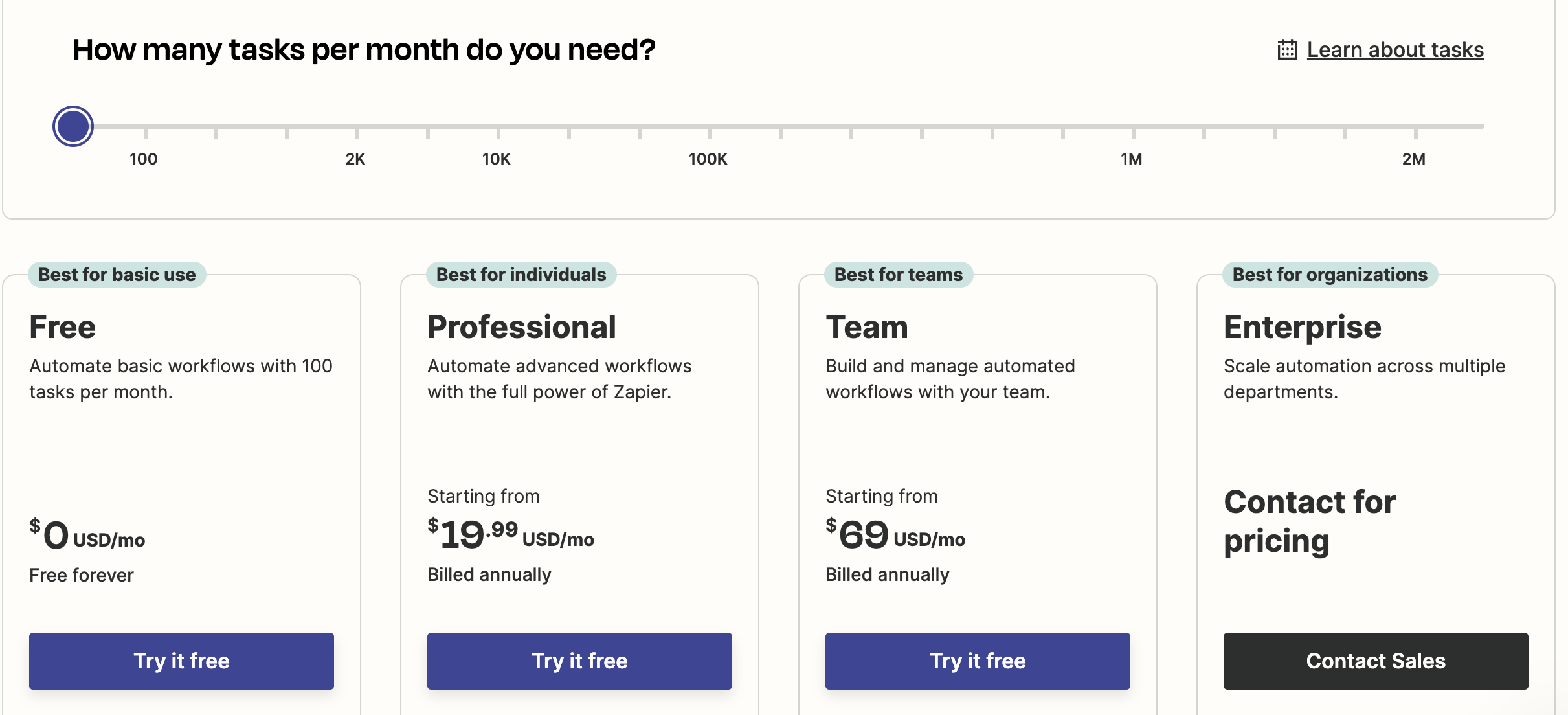
Zapier pricing is multi-faceted, with a range of variables including which integrations you use, how many tasks you use per month, and more. It starts with an extremely limited free plan, with paid tiers ranging from USD $19 to USD $3,999/month (with additional fees based on usage). If you use it heavily, it's not cheap! To learn more, check out this deep dive.
Takeaway
Zapier is the longtime market leader for a reason. They have the most pre-built connectors and all of the features you'd expect, along with a huge library of content. If you're a "nobody ever got fired for buying IBM" kind of person, Zapier is a great choice.
3. Workato
🏆 Best for: Large organizations and enterprises requiring automation at scale.
🔬 Free trial: Yes; on request.
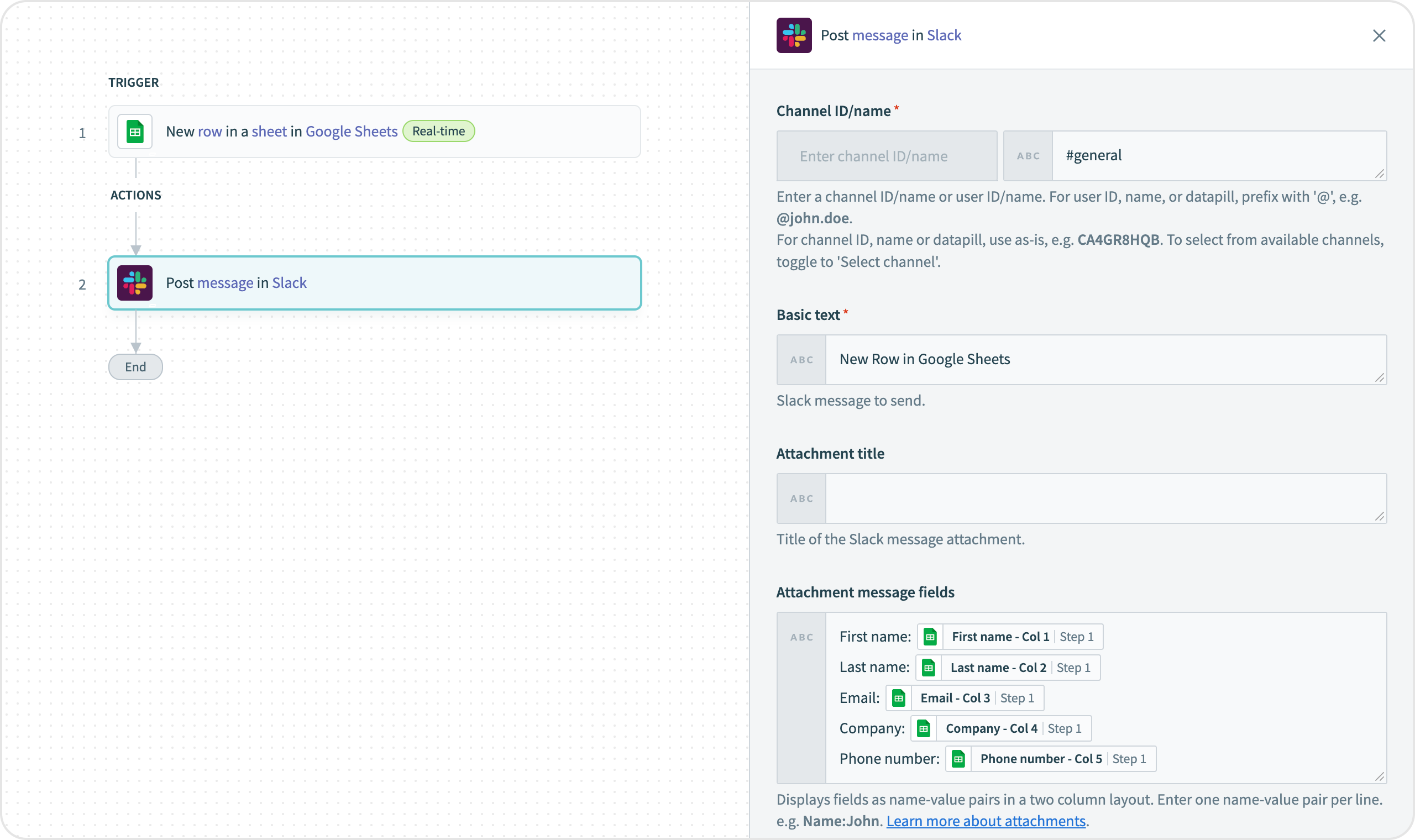
Workato is an enterprise-level workflow automation tool, offering a comprehensive solution for large organizations. Unlike many of the other tools on this list, which cater to a broad audience, Workato is designed for large, complex businesses like Atlassian, Adobe, and MGM.
It's designed specifically for IT teams and departments to automate complex business processes and data orchestration. It's the go-to choice for enterprise-level automation. However, its complexity and high cost may be prohibitive for smaller businesses and individual users.
Pros
✅ A wide array of integrations with 1,000+ business applications enabling seamless connectivity between enterprise systems, cloud services and popular apps.
✅ Data orchestration and ETL capabilities to combine data from a variety of enterprise sources.
✅ Designed with enterprise-grade security and customizable governance controls to ensure data integrity and privacy.
Cons
❌ Complex (or totally inaccessible) for non-technical users. In most companies, only IT teams create automations using Workato.
❌ Price. As an enterprise product, it's prohibitively expensive for smaller businesses.
Pricing
Workato’s pricing model varies based on the scale of use, number of connectors and tasks required. You have to contact Workato for a custom quote, but you should expect to pay over $10k per year.
Takeaway
If you're an IT leader at a large enterprise, Workato is a powerful and flexible platform that you should certainly consider, but it's not well suited to self-serve use by less technical users.
4. Tray.ai
🏆 Best for: Enterprise customers that want both no-code automation and technical API management.
🔬 Free tier: No, free trial on request.
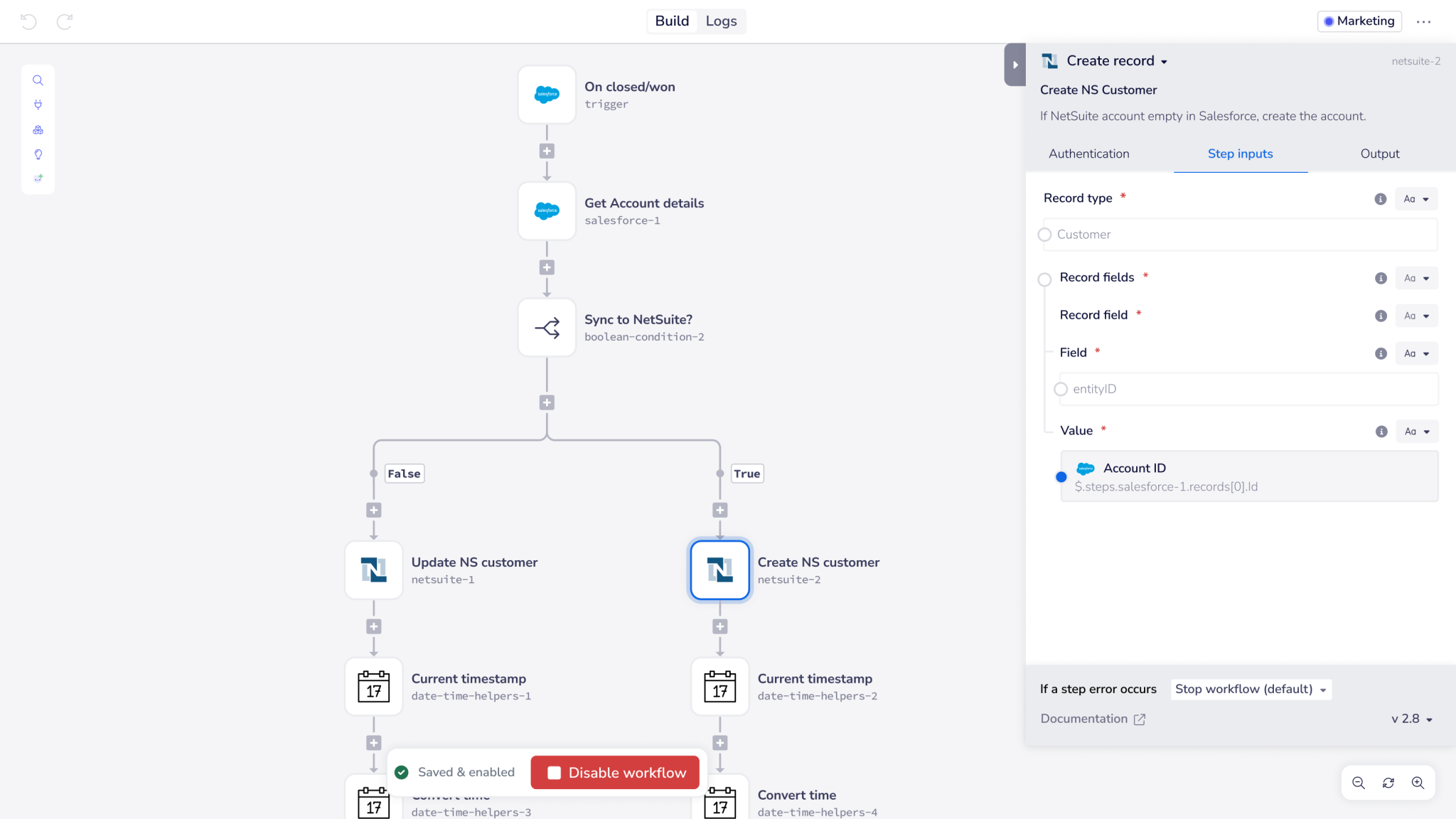
Much like Workato, you can tell that Tray.ai is built for enterprise buyers as soon as you land on their website. There's no option to try the product for free, so you can either do a demo with their sales team or requests a free trial. The connectors they emphasize (Salesforce, NetSuite, Snowflake, etc) also speak to their enterprise focus.
In addition to their low-code workflow builder, they offer a suite of other more technical products for developers looking to build integrations into their products, like data integrations and API management. They recently rebranded from Tray.io to Tray.ai and are heavily emphasizing their AI agent builder, but the details on how that works are a bit thin.
Pros
✅ Enterprise-ready platform, with large customers like Eventbrite, Github, and Udemy.
✅ Additional developer-focused capabilities like data syncing and API management.
✅ Significant investment in AI integrations and AI steps.
Cons
❌ No self-serve option to try the product or buy it at an affordable price for smaller businesses and teams.
❌ Technical product that bills itself at "low-code" and will be difficult for non-developers.
Pricing
Like Workato, Tray.ai's pricing model varies based on the scale of use, number of connectors and tasks required. You have to contact Workato for a custom quote, but you should expect to pay over $10k per year.
Takeaway
If you're an IT leader at a large enterprise, you should evaluate Tray.ai against Workato and get demos and quotes from both, but if you want something you can use right away as an end user at an affordable price, go with others on this list.
5. Microsoft Power Automate
🏆 Best for: Customers in the Microsoft Office 365 ecosystem.
🔬 Free tier: No, 30-day free trial of the Premium tier.
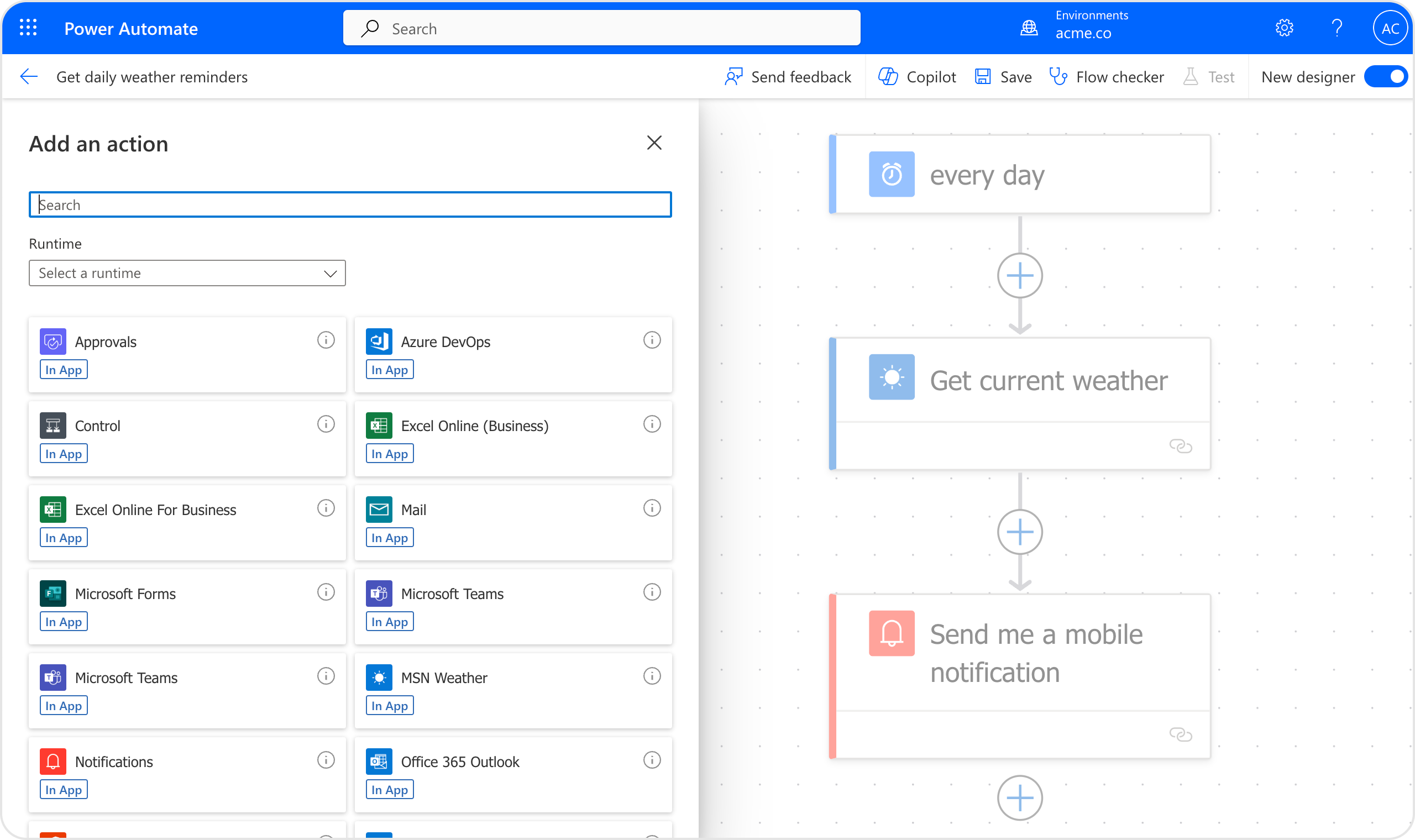
Microsoft Power Automate is pretty much what you'd expect from Microsoft. It's not the cheapest, nor is it the easiest to use, nor is it the most powerful, but it is a solid tool. If you're already in the Microsoft ecosystem, it may make sense for you as a convenient option to deploy and manage.
Pros
✅ Deep Office 365 integrations and administration, as you'd expect from a Microsoft product.
Cons
❌ Unintuitive design that feels a bit outdated (if you’re not a fan of the “Microsoft look”, run).
❌ Crashes when dealing with a large number of tasks.
Pricing
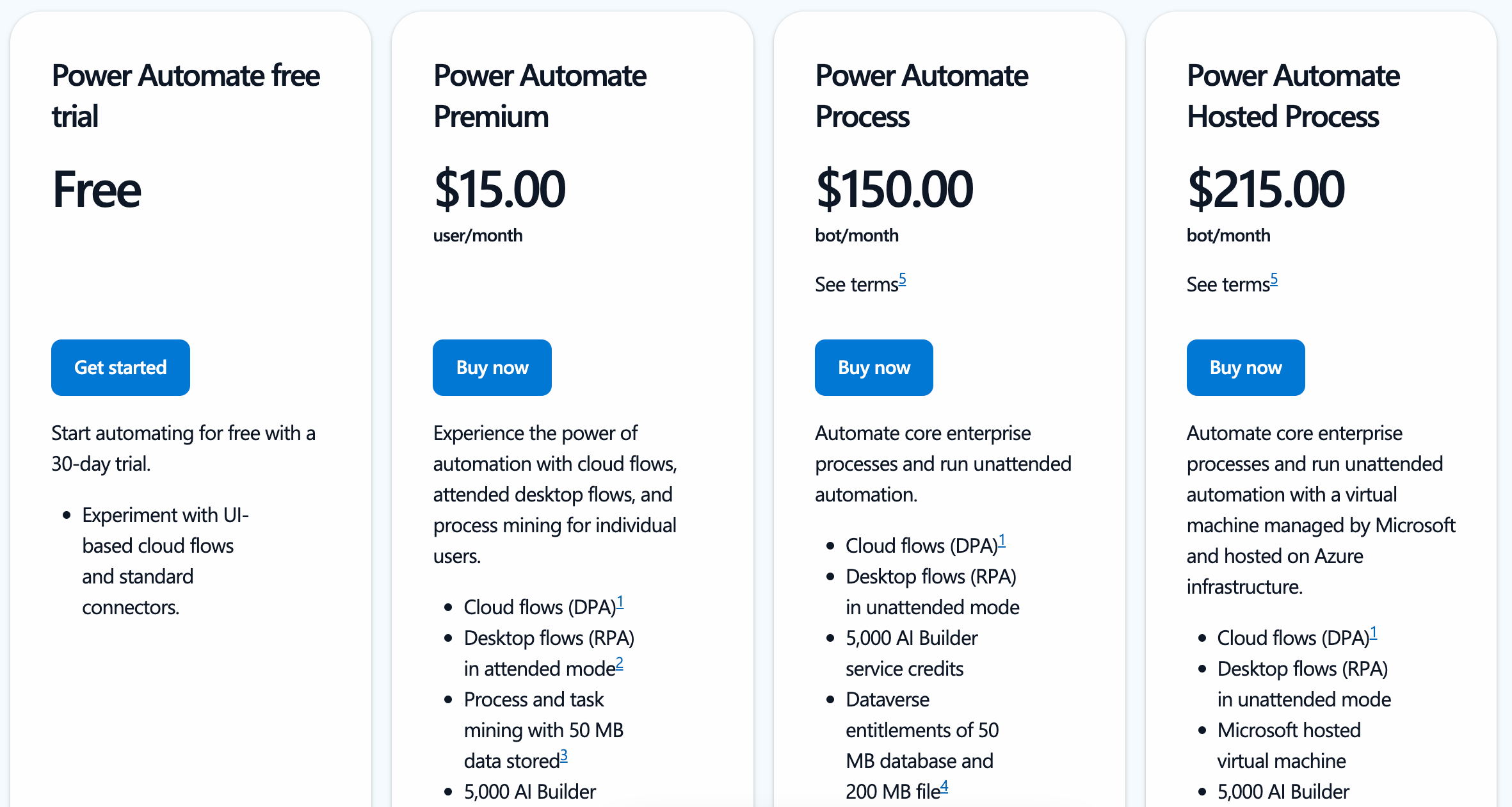
Takeaway
If you're not a Microsoft shop, definitely don't use it, but if you are, it's worth considering for ease of adoption and administration.
6. Activepieces
🏆 Best for: Engineers that want an open source product they can extend.
🔬 Free tier: Cloud version includes 1000 tasks, self-hosted is free.
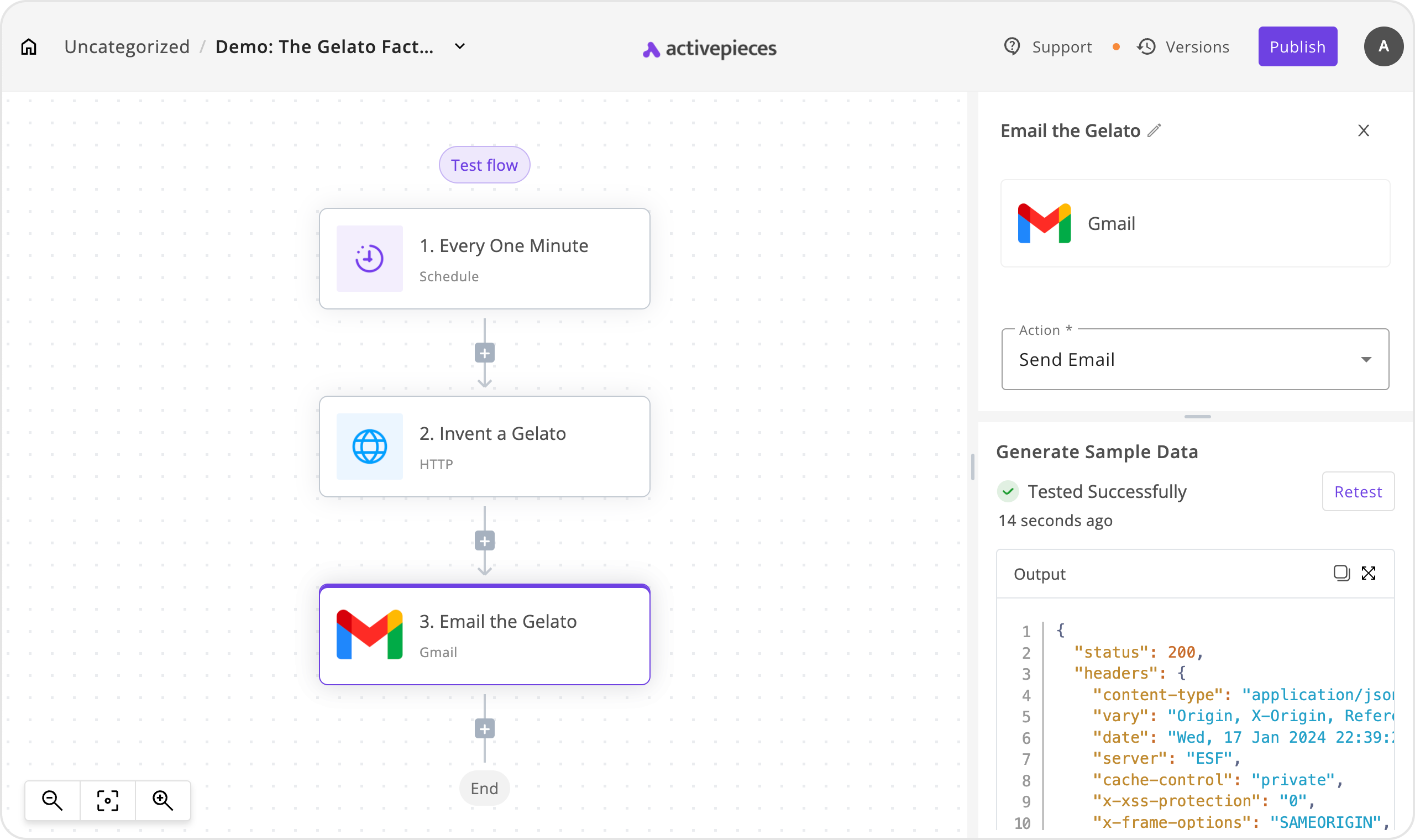
Activepieces is another newcomer to the automation space, and the main reason it stands out is its open source. This means that engineers can host it themselves and extend it as needed, which can help technical users get a more customized experience and save money. It also provides a white-labeled option if you want to embed automation into your product.
Pros
✅ Open source project with self-hosted option.
Cons
❌ Only ~200 integrations, which is fewer than most of the products on this list.
Pricing
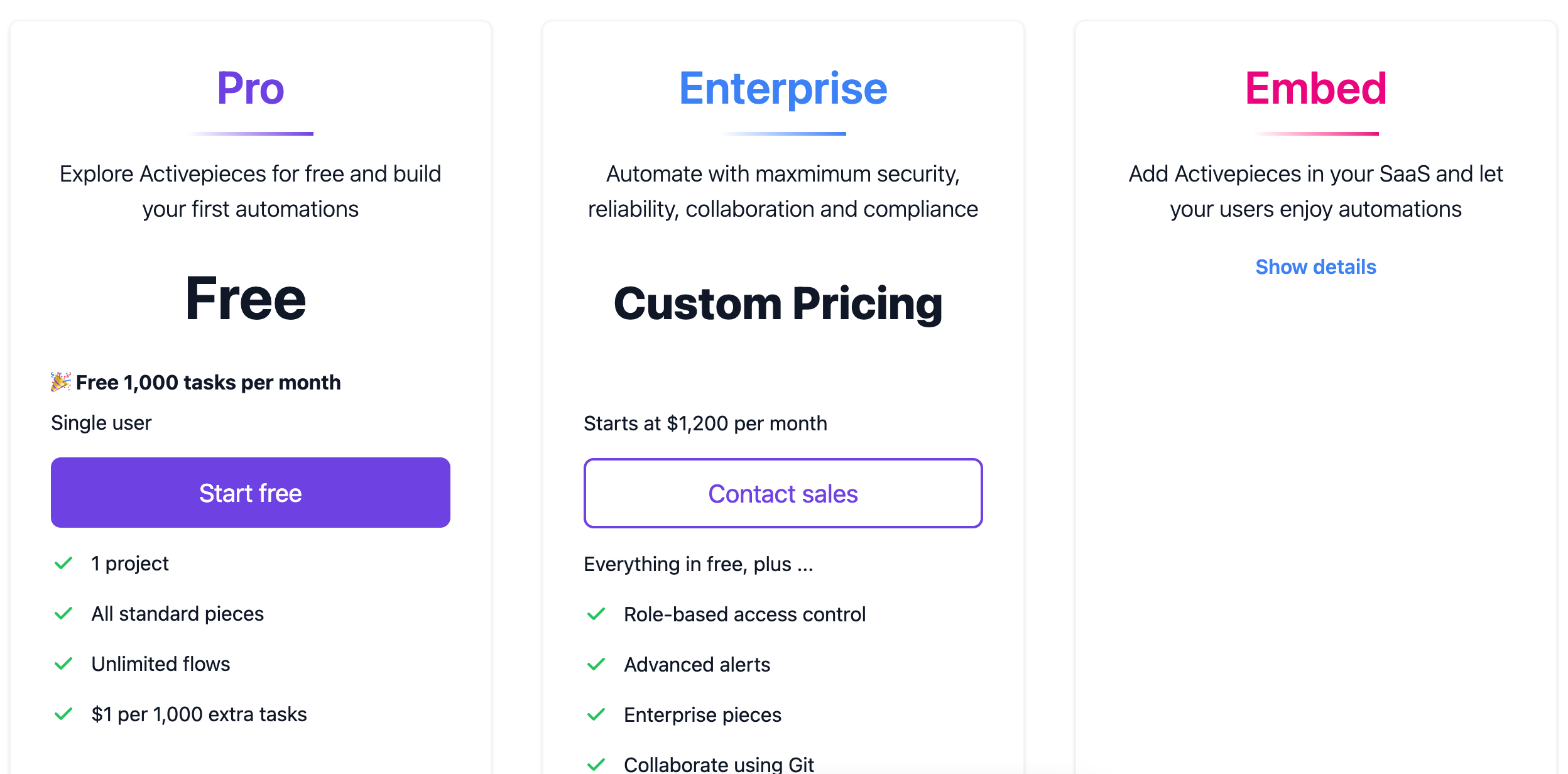
Takeaway
If you're an engineer who wants a self-hosted and open source product that you can both extend and embed into your application, we recommend Activepieces.
7. Pipedream
🏆 Best for: Developers looking for a code-centric automation platform.
🔬 Free tier: Yes; includes 300 credits per month.
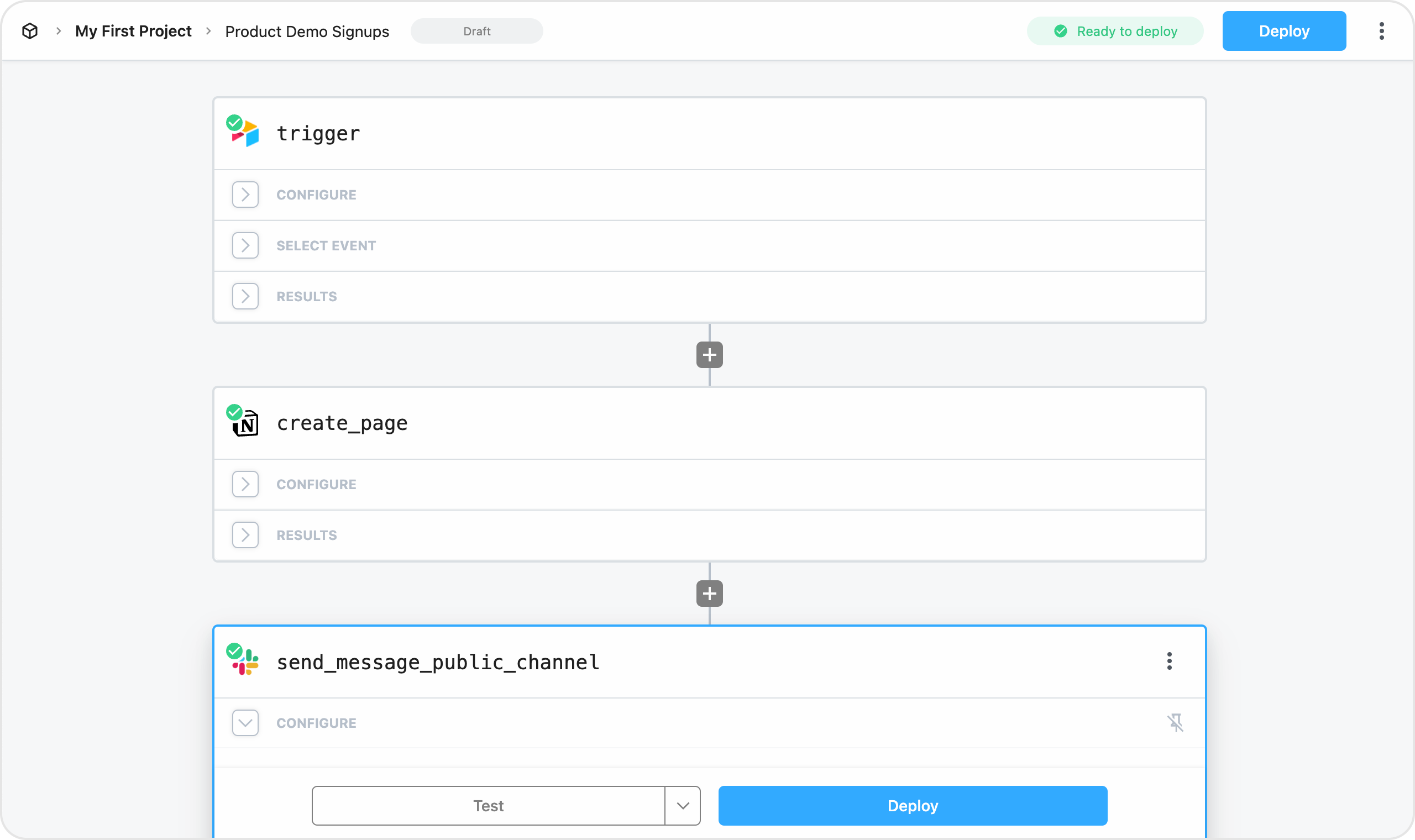
Pipedream has only been around since 2021, so like us, it’s also a relatively new player.
It’s a workflow automation tool designed for developers—which makes it a powerful Zapier alternative for the crowd that isn’t frightened of integrating their automated workflows into production code.
If you’re a developer keen to get more granular control over your automations (or willing to hire someone who is!) Pipedream may just be the right tool.
Pros
✅ Developer-centric platform that allows for intricate workflow customization using custom code.
✅ Large community of developers and open source license.
Cons
❌ Explicitly designed for engineers.
Pricing

Takeaway
If you're a developer or engineer that wants to build automations in a true coding environment, Pipedream is a powerful and economical option to consider.
8. n8n
🏆 Best for: Developers that want a self-hosted, technical tool.
🔬 Free tier: No; free trial of Starter plan.
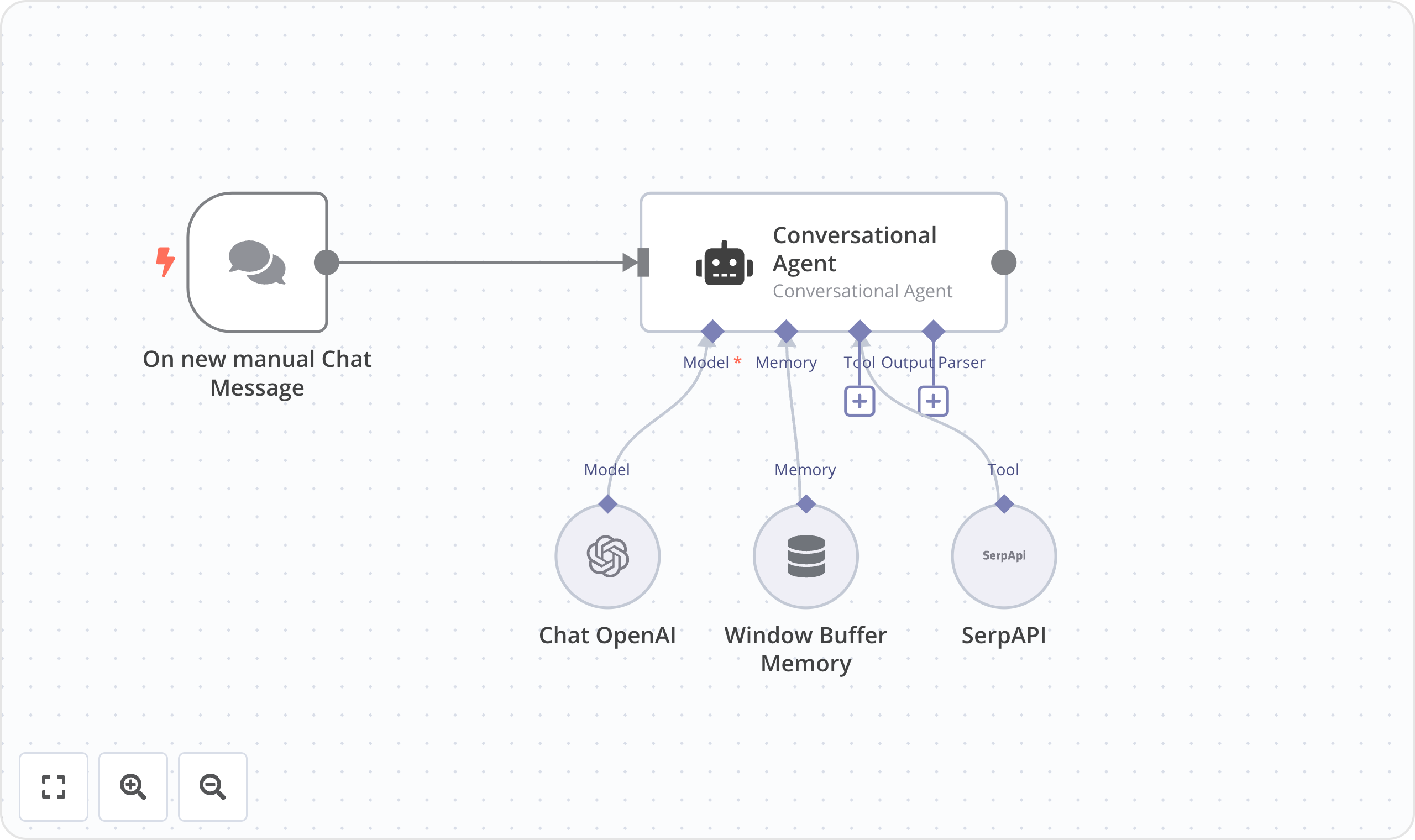
n8n is an "open-source" workflow automation tool that offers a more versatile solution to Zapier (with a few added complexities along the way). Like Pipedream, n8n is targeted at developers and engineers.
With n8n you can run complex automations across a wide range of services and integrate it directly into your own application. Because n8n is self-hostable, it’s appealing to devs that are willing to do the work to manage their automation infrastructure themselves and get the resulting customization and cost savings. However, developers question the nature of the open source license and have expressed skepticism about contributing.
Pros
✅ Self-hosted option gives engineers additional flexibility and potential cost savings.
✅ Broad set of integrations.
Cons
❌ Steep learning curve for non-technical users.
❌ Restrictive open source license.
Pricing
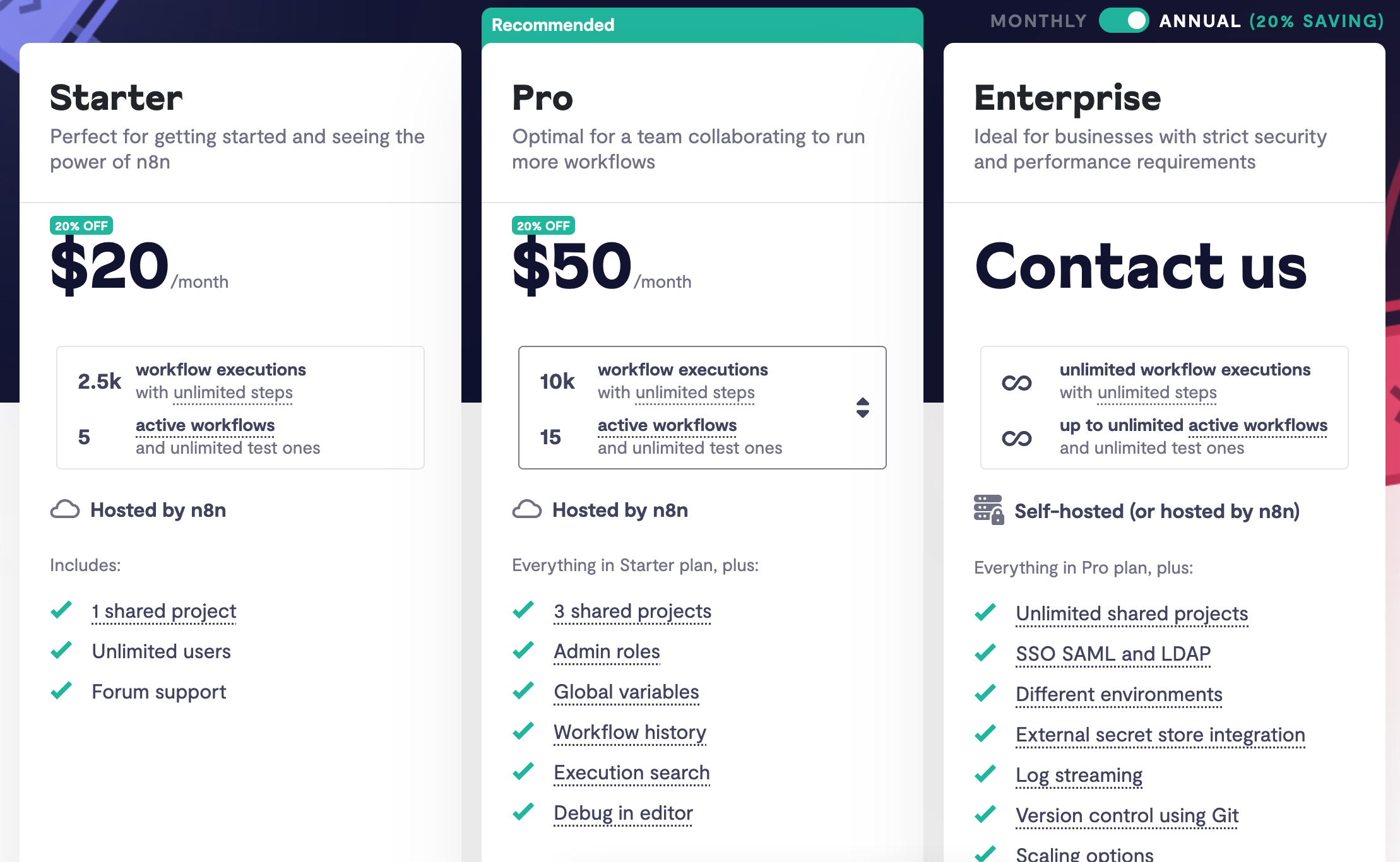
Takeaway
If you're an engineer who wants to self-host, you should consider n8n as an alternative to ActivePieces and Pipedream.
9. Integrately
🏆 Best for: Straightforward single-step automations.
🔬 Free tier. 100 tasks across 5 single-step automations.
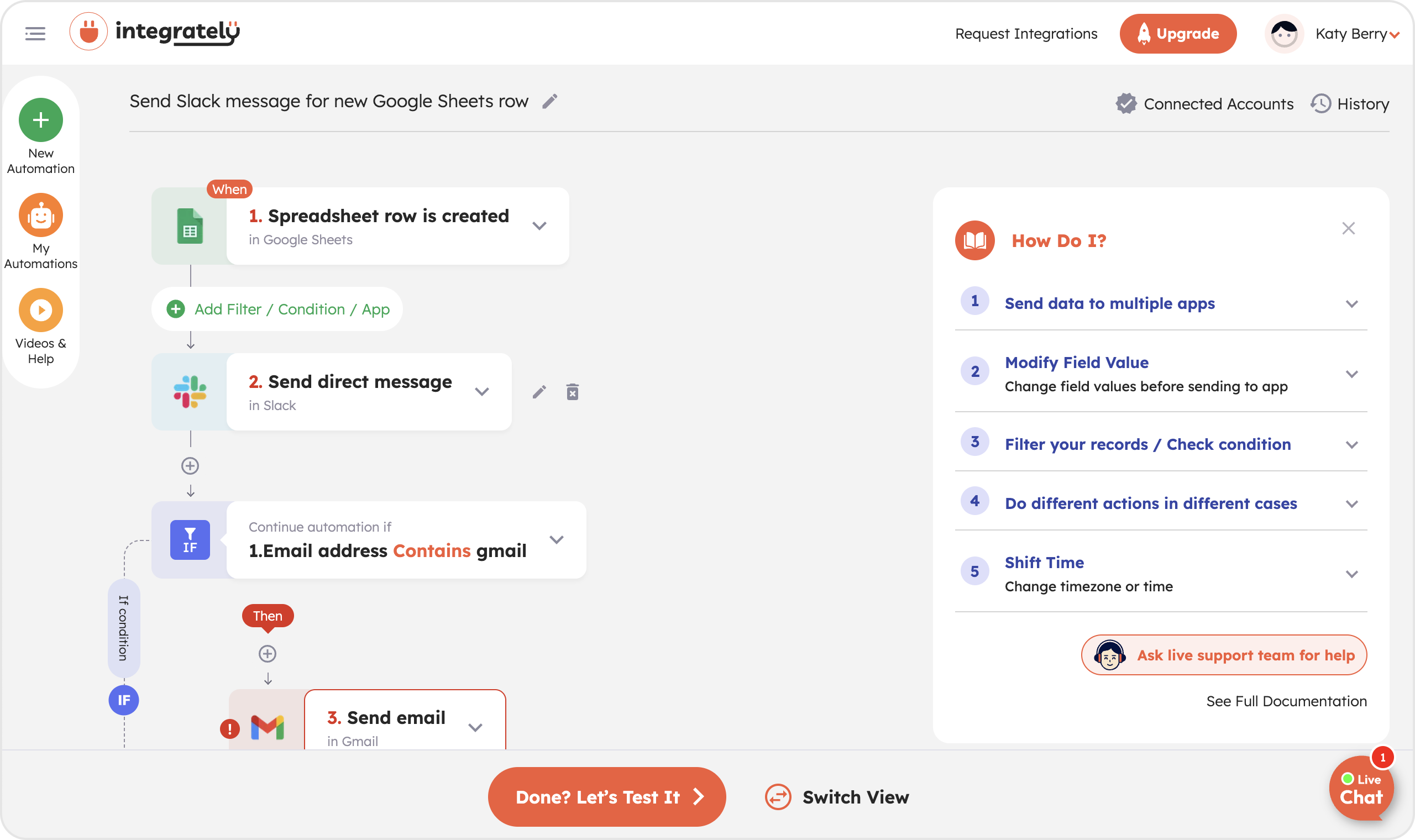
Integrately is a workflow automation platform that's competing with Zapier primarily on price. Founded in 2016, it’s been around longer than some of the other options on this list but has failed to build a massive following, which comes down to the limited value prop compared to alternatives.
Pros
✅ Simple UI for single-step workflows.
✅ Helpful support that will troubleshoot your issues and even get on a live call with you to help you build your automations.
Cons
❌ Shallower integrations with missing features.
❌ Less reliable product experiences are often reported on review sites.
Pricing
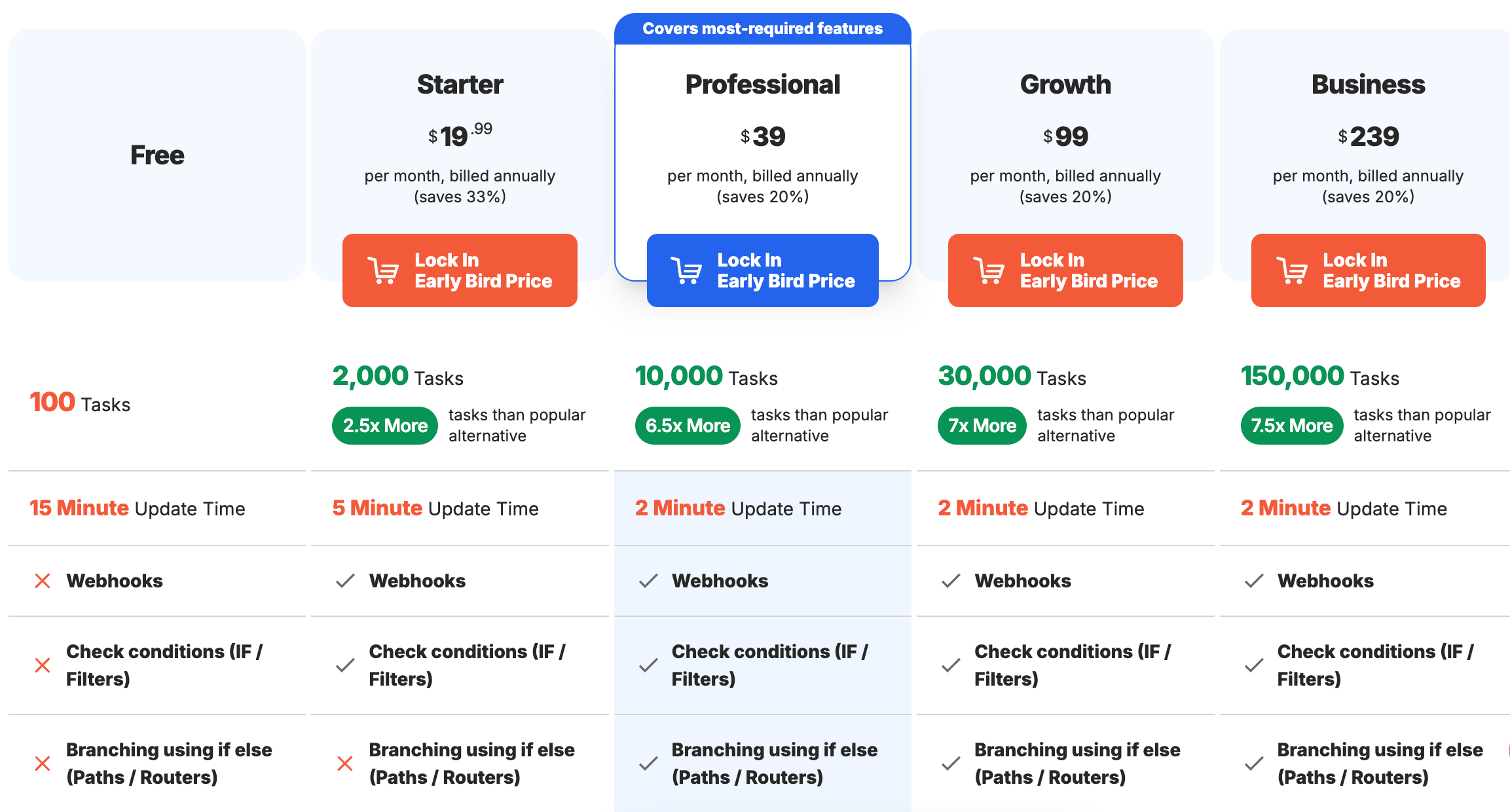
Takeaway
Integrately is similar to Zapier for basic, single-step automations, but it comes at a lower price, so it can be a good option for users that love Zapier but hate the bill.
10. Albato
🔬 Free tier: Yes; 100 tasks across 5 automations per month.

Albato is also primarily designed for simple single-step workflows that have a trigger and a single action. They primarily target small businesses and startups, with a focus on users that use other no-code tools (like Bubble).
Pros
✅ Simple UI for single-step workflows.
✅ Embedded experience for white-label use cases.
Cons
❌ Limited to simple workflows.
❌ No AI experience.
Pricing
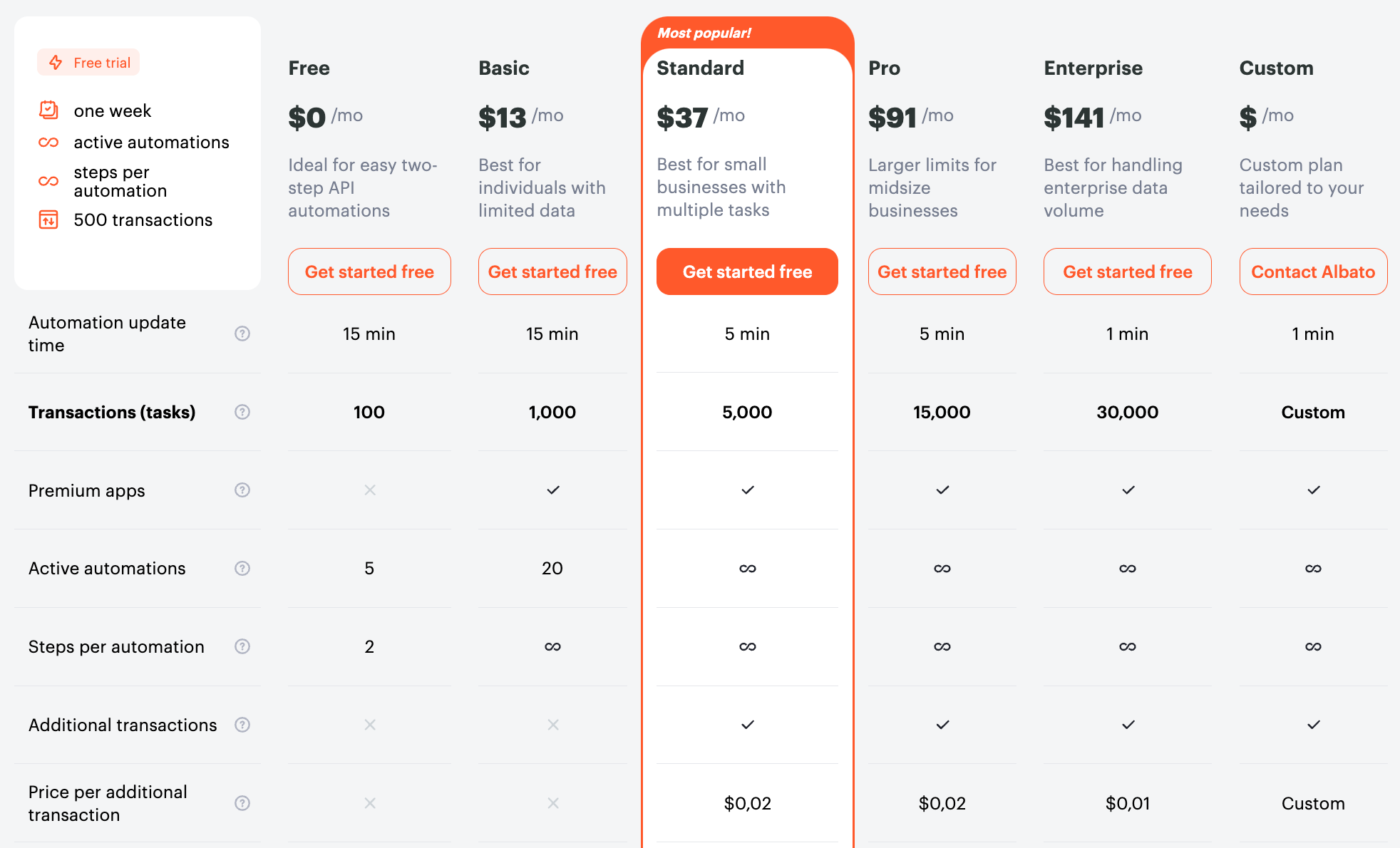
Takeaway
If you're a small business looking for single-step workflows at a decent price, give Albato's free tier a try.
Your next steps
Making workflows simpler and boosting productivity doesn't have to be hard for teams looking to improve.
Whether you want to develop custom workflows for complex tasks or just need a single platform with a few of the right readymade automations, with the right tool, automating your repetitive tasks can become an easy part of your day, letting you focus more on important work—or play.
If you want a simple, smart platform that combines automation with human touch, why not try Relay today? See how it can change your team's work for the better.
_______________
Make alternatives FAQs
What is the difference between Make and Zapier?
Make and Zapier both automate workflows but have key differences. Make excels in handling complex workflows with its visual editor and detailed logic, making it ideal for intricate business processes. Zapier, on the other hand, is known for its user-friendly interface and vast library of prebuilt connectors, catering to a broader audience including mid-sized businesses. Read our full comparison for more info.
Are Make and Integromat the same thing?
Yes! Integromat rebranded to Make, but the core functionalities remain the same. Make continues to offer advanced automation for complex workflows and business processes with a highly visual, user-friendly interface. The rebrand also brought enhancements, making it even more powerful and versatile for handling intricate automation needs.
_______________
Related reading:

